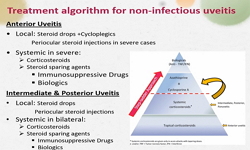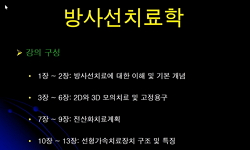족근관은 내과와 종골을 연결하는 굴건 지대 아래 쪽에 존재하는 터널로 후경골건, 장족지 굴곡건, 후경골 동정맥, 후경골 신경 및 장무지 굴곡건이 지나가는 구조물이다. 족근관 증후군은 ...
http://chineseinput.net/에서 pinyin(병음)방식으로 중국어를 변환할 수 있습니다.
변환된 중국어를 복사하여 사용하시면 됩니다.
- 中文 을 입력하시려면 zhongwen을 입력하시고 space를누르시면됩니다.
- 北京 을 입력하시려면 beijing을 입력하시고 space를 누르시면 됩니다.
https://www.riss.kr/link?id=A100132409
- 저자
- 발행기관
- 학술지명
- 권호사항
-
발행연도
2014
-
작성언어
Korean
-
주제어
posterior tibial nerve ; entrapment neuropathy ; tarsal tunnel ; treatment ; 후경골 신경 ; 포착성 신경병증 ; 족근관 ; 치료
-
등재정보
KCI등재
-
자료형태
학술저널
- 발행기관 URL
-
수록면
340-345(6쪽)
-
KCI 피인용횟수
1
- 제공처
-
0
상세조회 -
0
다운로드
부가정보
국문 초록 (Abstract)
족근관은 내과와 종골을 연결하는 굴건 지대 아래 쪽에 존재하는 터널로 후경골건, 장족지 굴곡건, 후경골 동정맥, 후경골 신경 및 장무지 굴곡건이 지나가는 구조물이다. 족근관 증후군은 족근관 내에서 후경골 신경 및 신경 분지가 압박되어 발생하는 일종의 압박성신경 증후군이다. 족근관 증후군을 발생시키는 원인으로는 공간 점유 병소, 비후된 굴건 지대, 골극, 족근골 결합증, 정맥류 및 외상 등으로 알려져 있으며 족부 내측의 통증이 가장 흔한 증상이며 압박되는 신경 분지에 따라서 감각 저하나 이상 감각이 나타날 수 있다. 진단은 자세한 병력 청취 및 내과 아래의 압박 검사 등의 신체 검사를 통해 진단할 수 있으며 결절종, 지방종 및 신경종 등과 같은 공간 점유 병소가 있는 경우는 초음파나 자기공명영상이 도움을 준다. 신경 근전도 검사가 이환된 신경 분지를 구분하는 데 도움을 주지만 신경 근전도 검사가 음성이라고 하여 족근관 증후군을 배제할 수 없으므로 병력 청취와 신체 검사가 가장 중요한 진단의 기준이 된다. 치료로는 물리 치료, 야간 부목 고정술, 스테로이드 주사 요법 등의 보존적인 치료가 우선 권장되나 증상의 완화가 관찰되지 않을 때에는 수술적인 감압술이 추천된다. 수술적인 치료 결과는 다양하게 보고되고 있으나 젊은 환자에서 종물에 의해 발생한 경우 조기에 수술적인 처치를 시행하면 만족할만한 결과를 얻을 수가 있다고 알려져 있다.
다국어 초록 (Multilingual Abstract)
The tarsal tunnel is located beneath the flexor retinaculum, which connects the medial malleolus and calacaneus. The tarsal tunnel contains the posterior tibialis tendon, flexor digitorum longus tendon, posterior tibial artery and vein, posterior tibi...
The tarsal tunnel is located beneath the flexor retinaculum, which connects the medial malleolus and calacaneus. The tarsal tunnel contains the posterior tibialis tendon, flexor digitorum longus tendon, posterior tibial artery and vein, posterior tibial nerve, and flexor halluces longus tendon. Tarsal tunnel syndrome is a compressive neuropathy of posterior tibial nerve and its branches under the flexor retinaculum. The etiologies of tarsal tunnel syndrome are space-occupying lesion, hypertrophied flexor retinaculum, osteophytes, tarsal coalition, varicose vein, and trauma. The symptoms are foot pain and hypoesthesia or paresthesia at dermatome according to involving nerve branches. Clinical diagnosis can be obtained from a detailed history and physical examination such as compressive test at the tarsal tunnel area. Ultrasonography and magnetic resonance imaging can reveal the space-occupying lesion, such as ganglion, lipoma, and neuroma. The initial treatments of tarsal tunnel syndrome are conservative management, such as physical therapy, night splint, and steroid injection. Surgical decompression is indicated after failure of conservative managements. Variable results of surgical treatment have been reported. Favorable result after decompression could be obtained from young patients, early onset symptoms, and space-occupying lesion.
목차 (Table of Contents)
- 서론
- 족근관의 해부학
- 족근관 증후군의 원인
- 진단
- 치료
- 서론
- 족근관의 해부학
- 족근관 증후군의 원인
- 진단
- 치료
- 결론
- REFERENCES
참고문헌 (Reference)
1 김재영, "후경골 신경에서 기인한 신경초종의 재발로 발생한 족근관 증후군" 대한족부족관절학회 18 (18): 36-39, 2014
2 Havel PE, "Tibial nerve branching in the tarsal tunnel" 9 : 117-119, 1988
3 Keck C, "The tarsal-tunnel syndrome" 44 : 180-182, 1962
4 Edwards WG, "The tarsal tunnel syndrome. Diagnosis and treatment" 207 : 716-720, 1969
5 Heimkes B, "The proximal and distal tarsal tunnel syndromes. An anatomical study" 11 : 193-196, 1987
6 정현진, "The Usefulness of the Preoperative Magnetic Resonance Imaging Findings in the Evaluation of Tarsal Tunnel Syndrome" 대한영상의학회 66 (66): 183-192, 2012
7 Takakura Y, "Tarsal tunnel syndrome. Causes and results of operative treatment" 73 : 125-128, 1991
8 Kinoshita M, "Tarsal tunnel syndrome in athletes" 34 : 1307-1312, 2006
9 Machiels F, "Tarsal tunnel syndrome : ultrasonographic and MRI features" 82 : 49-50, 1999
10 Bailie DS, "Tarsal tunnel syndrome : diagnosis, surgical technique, and functional outcome" 19 : 65-72, 1998
1 김재영, "후경골 신경에서 기인한 신경초종의 재발로 발생한 족근관 증후군" 대한족부족관절학회 18 (18): 36-39, 2014
2 Havel PE, "Tibial nerve branching in the tarsal tunnel" 9 : 117-119, 1988
3 Keck C, "The tarsal-tunnel syndrome" 44 : 180-182, 1962
4 Edwards WG, "The tarsal tunnel syndrome. Diagnosis and treatment" 207 : 716-720, 1969
5 Heimkes B, "The proximal and distal tarsal tunnel syndromes. An anatomical study" 11 : 193-196, 1987
6 정현진, "The Usefulness of the Preoperative Magnetic Resonance Imaging Findings in the Evaluation of Tarsal Tunnel Syndrome" 대한영상의학회 66 (66): 183-192, 2012
7 Takakura Y, "Tarsal tunnel syndrome. Causes and results of operative treatment" 73 : 125-128, 1991
8 Kinoshita M, "Tarsal tunnel syndrome in athletes" 34 : 1307-1312, 2006
9 Machiels F, "Tarsal tunnel syndrome : ultrasonographic and MRI features" 82 : 49-50, 1999
10 Bailie DS, "Tarsal tunnel syndrome : diagnosis, surgical technique, and functional outcome" 19 : 65-72, 1998
11 Lau JT, "Tarsal tunnel syndrome : a review of the literature" 20 : 201-209, 1999
12 Ahmad M, "Tarsal tunnel syndrome : a literature review" 18 : 149-152, 2012
13 Franson J, "Tarsal tunnel syndrome : a compression neuropathy involving four distinct tunnels" 23 : 597-609, 2006
14 Radin EL, "Tarsal tunnel syndrome" 181 : 167-170, 1983
15 Ahn JH, "Surgical treatment of tarsal tunnel syndrome" 11 : 187-191, 2007
16 Alshami AM, "Strain in the tibial and plantar nerves with foot and ankle movements and the influence of adjacent joint positions" 24 : 368-376, 2008
17 Sung KS, "Short-term operative outcome of tarsal tunnel syndrome due to benign space-occupying lesions" 30 : 741-745, 2009
18 Bazaz R, "Results of endoscopic plantar fascia release" 28 : 549-556, 2007
19 Baylan SP, "Prevalence of the tarsal tunnel syndrome in rheumatoid arthritis" 20 : 148-150, 1981
20 Sammarco GJ, "Outcome of surgical treatment of tarsal tunnel syndrome" 24 : 125-131, 2003
21 Hofmeister EP, "Endoscopic plantar fascia release : an anatomical study" 16 : 719-723, 1995
22 Reeve F, "Endoscopic plantar fascia release : a cross-sectional anatomic study" 18 : 398-401, 1997
23 Reed SC, "Compression of the deep branch of the peroneal nerve by the extensor hallucis brevis muscle : a variation of the anterior tarsal tunnel syndrome" 38 : 545-546, 1995
24 Skalley TC, "Clinical results following revision tibial nerve release" 15 : 360-367, 1994
25 Pfeiffer WH, "Clinical results after tarsal tunnel decompression" 76 : 1222-1230, 1994
26 Lam SJ, "A tarsal-tunnel syndrome" 2 : 1354-1355, 1962
27 Nekoroski T, "A recombinant human hyaluronidase sustained release gel for the treatment of post-surgical edema" 53 : 777-785, 2014
동일학술지(권/호) 다른 논문
-
Achromobacter xylosoxidans Infection Following Total Knee Arthroplasty
- 대한정형외과학회
- Su Chan Lee(이수찬)
- 2014
- KCI등재
-
- 대한정형외과학회
- Jung-Ro Yoon(윤정로)
- 2014
- KCI등재
-
- 대한정형외과학회
- 홍완기(Wan Kee Hong)
- 2014
- KCI등재
-
- 대한정형외과학회
- 강민수(Min Soo Kang)
- 2014
- KCI등재
분석정보
인용정보 인용지수 설명보기
학술지 이력
| 연월일 | 이력구분 | 이력상세 | 등재구분 |
|---|---|---|---|
| 2026 | 평가예정 | 재인증평가 신청대상 (재인증) | |
| 2020-04-14 | 학회명변경 | 영문명 : 미등록 -> The Korean Orthopaedic Association |  |
| 2020-01-01 | 평가 | 등재학술지 유지 (재인증) |  |
| 2017-01-01 | 평가 | 등재학술지 유지 (계속평가) |  |
| 2014-01-14 | 학술지명변경 | 외국어명 : 미등록 -> Journal of the Korean Orthopaedic Association |  |
| 2013-01-01 | 평가 | 등재학술지 유지 (등재유지) |  |
| 2010-01-01 | 평가 | 등재 1차 FAIL (등재유지) |  |
| 2008-01-01 | 평가 | 등재학술지 유지 (등재유지) |  |
| 2005-05-30 | 학술지등록 | 한글명 : 대한정형외과학회지외국어명 : 미등록 |  |
| 2005-01-01 | 평가 | 등재학술지 선정 (등재후보2차) |  |
| 2004-01-01 | 평가 | 등재후보 1차 PASS (등재후보1차) |  |
| 2002-07-01 | 평가 | 등재후보학술지 선정 (신규평가) |  |
학술지 인용정보
| 기준연도 | WOS-KCI 통합IF(2년) | KCIF(2년) | KCIF(3년) |
|---|---|---|---|
| 2016 | 0.06 | 0.06 | 0.08 |
| KCIF(4년) | KCIF(5년) | 중심성지수(3년) | 즉시성지수 |
| 0.08 | 0.08 | 0.24 | 0.01 |





 DBpia
DBpia






